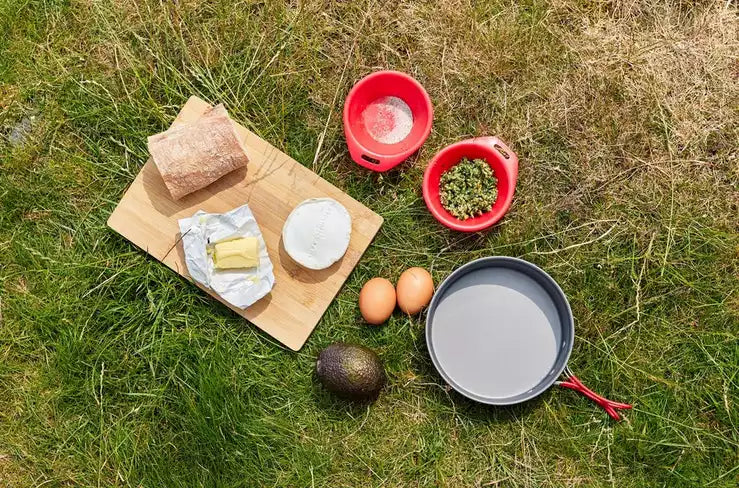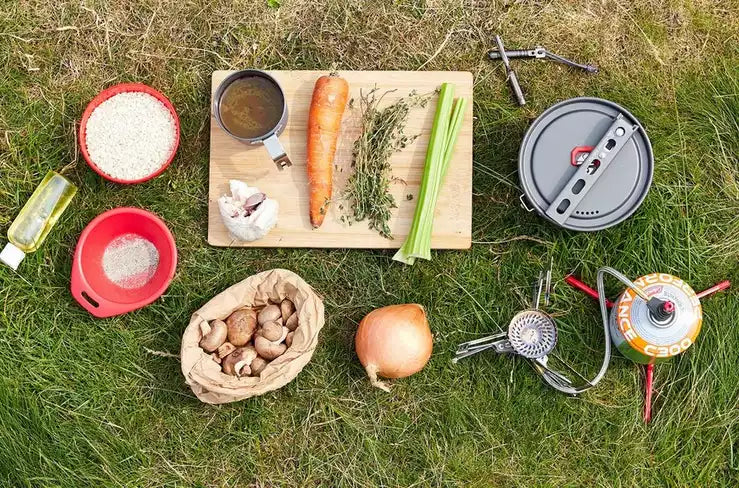Here at Life Outdoors we regularly receive great questions on how to build a fire outdoors. In our first bushcraft instalment we share our tricks and tips for igniting and sustaining a campfire.
Fire Fundamentals
Understanding how to create fire will give you the edge when adventuring outdoors and can be invaluable in any survival situation.
A well-constructed fire will give you:
• a source of heat
• a way to cook food and boil water to kill harmful bacteria
• a source of light
• a way of deterring animals from your camp
Preparation
Building a fire is much like cooking a meal; you need the right ingredients and to understand the recipe before you start. Preparation is essential. Too often people get a fire started, only to find that they don’t have enough wood nearby to keep it going.
"The most important thing to remember when collecting wood for a traditional campfire is that it should be dead and dry. If the wood does not snap easily or is green inside then it is still live".
To create a traditional wood campfire you will need to collect the following:
Tinder: Will ignite easily with a spark. Natural options include silver birch bark, dry grasses, pine needles, pine cones or the fungus found under the bark of living birch trees. These burn on their own as they have their own resin. Your tinder should be as dry as possible and can be finely shredded.

Kindling: Small twigs, sticks which must be dry. These will catch flame from the tinder quickly. They form the basis of the Tepee method described later in this post.
Thicker wood/logs: Large, sustainable material will keep the fire going once alight. Collect a range of different sized wood which should be added to the fire in stages, going up in size. Should be dry, dead and can be cut into smaller combustible pieces.
Suitable site: Ensure that it is legal and safe to build your fire where you plan to beforehand. Most campsites will have designated fire pits. Have some water with you to put the fire out if it gets out of hand.
The Teepee Method
This popular method is simple, effective and the preferred choice when lighting a fire. It produces a fast flame and the heat is directed up to a single point, making it ideal for boiling water. Once the tepee collapses wood can be laid around and across it to create a solid cooking base.
1. Place a ball of dry Tinder in the centre of your fire pit. Place it on dry bark if the ground is wet. Create a tepee or cone shape above the tinder using your dry kindling, leaving plenty of air space between sticks. Push the sticks into the ground for greater stability if necessary.
2. Light the tinder. It should start to spread to the kindling. Feed the fire with bigger sticks being careful not to smother it. This is the basis of your campfire. (Depending on how you light your tinder you may need to spark it first and then place it in your tepee lit).
3. Start to add bigger pieces of wood to sustain the fire. Once the tepee collapses, lay wood around and across it to create a flat base for cooking on. Reduce your fire to embers before cooking; these produce sustained heat, not flames.
"Don’t forget to return the fire site to its original state leaving no trace that you have been there".
The fire is often key to any camping trip but don't forget all your other important accessories.
Share your top firebuilding tips with us below or on our Facebook, Twitter or Instagram pages now.







